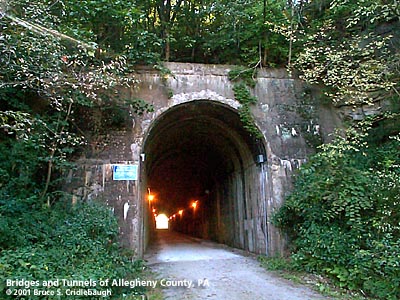The only problem with that is that Public Transit still exited in 1942, we can NOT say the same today.
Peak Streetcar usage in the US was in 1918, but this included a lot of what was called "Interurban" Lines. Interurbans lines had been built starting in the 1890s to provide competition to the Steam locomotive lines. The Electric Drive of the Interurbans permitted frequent stops on lines that did NOT need the care Steam locomotives needed. These lines were the first ones affected by the raise of the Automobiles and started to decline as we entered WWI (WWI caused a Labor Shortage in the US do to lack of Immigrants which raised wages which cut the profits of marginal interurban lines). Steam Locomotive lines had lone saw the Interurbans as competitors and also did everything they could increase the cost ot run Interurban lines (For example, requiring Bridges over the locomotive lines instead of at grade, even if the Steam locomotive line only ran a train once a day or less of that line). Another way the Steam lines did was require any bridge or tunnel be built to the same level as the railroad it self was building. This was especially done by the Pennsylvania Railroad which was upgrading its lines at that time by building them up in the cities and town they went through with massive tunnels and Bridges (The Pennsylvania Railroad did this on an another Steam line trying to enter into Pittsburgh, the resulting Bridges for that line look like Tunnels to the Roads the Bridges went over.
Here is a picture of such a Bridge (Yes it looks like a Tunnel, but it is a Bridge over the road):
 http://pghbridges.com/oakdale/0565-4478/montourenlow_tun.htm
http://pghbridges.com/oakdale/0565-4478/montourenlow_tun.htmAnyway, do to the Interurbans (Some of which survived till the early 1950s), the peak year for Streetcars was 1918, but interurbans then went into a rapid decline. Urban lines continue to EXPAND afterward but not enough to overcome the decline in Rural Interurbans (Remember 1920 was the first Census when you had More Americans in Urban areas as opposed to Rural Areas). Peak for the City of Pittsburgh was 1927 (Los Angles peaked during WWII). In Pittsburgh, do to the depression, numbers stayed close to the 1927 numbers (but never exceeded them) till after WWII. After WWII, the number of Streetcars went into rapid decline. Buses replaced some of these Streetcars, but buses held less people, but given the drop in riders this was a minor problem, the big problem was the total drop in Streetcars and Buses from 1945 till 1970 (There was a shot respite during the 1970s, where Buses held they own in terms of Transit, but starting in 1980 the decline re-started and did NOT reverse will 2001).
My point is simple, during WWII, the streetcar lines were still in place (Or in smaller cities replaced by Buses). These Streetcars and Buses could re-gear back to pre-automobile days for they still had the Equipment and the Drivers (In fact during WWII some Streetcar lines were re-instated by order of the Federal Government to save fuel, bus lines were ORDERED to stop service at Streetcar lines to dave fuel).
Today, we do NOT have the excess Streetcars and or buses just lying around to be used. Conversion today, will mean MORE than just bring already existing vehicles back on line. In 1939 Pittsburgh converted it horse drawn milk wagons ot Trucks. In 1942 they re-reverted back to horse drawn wagons, by federal Order. They did so for the Horses were still around as were the wagons (and the Stables). Again, it only require the use of pre-existing equipment NOT new Equipment.
My point is simple conversion today will take more than what we did in WWII, we have to MAKE alternatives ways to transport. This requires a lot more effort then just re-instating existing but "obsolete" equipment. The better way to look at this is the Milk Wagons, while Officially converted in 1939, the equipment was still Available to get into a position to replace ALL of the Horses and Wagons.
Another Example of this is my old National Guard Armory, Hunt Armory in Pittsburgh. It still has stables for horses. I talked about them with some older men stations in Hunt, but never did have a chance to go to the Stables. The Stables were just not in use when I was in, but used till conversion to Trucks in 1940, ten years after the Army first looked into using Trucks (In fact the M101A1 is NOT a M101 is the M101 105mm Howitzer was designed to be horse drawn in 1938, it was converted to be truck drawn in 1940 and the truck version was designated the M101A1, the A1 was for the fact it was modified for truck use). Trucks were first used to haul Artillery during WWI (Some steam engines were used during the Crimea war in 1854, but Horses were the preferred way to move Artillery till WWII), but th conversion to Trucks for the US Army did not take place till 1941 (The German And Russian Armies used horse drawn Artillery all through WWII). England converted quicker than the US, but it had a smaller army (England was truck transported by 1939). I go into this detail to show that Conversion is easy on the Small Scale, but on the Scale needed it will take at least a decade, just like it did for the Milkman and the Army (And the larger the conversion needed, the longer it will take).